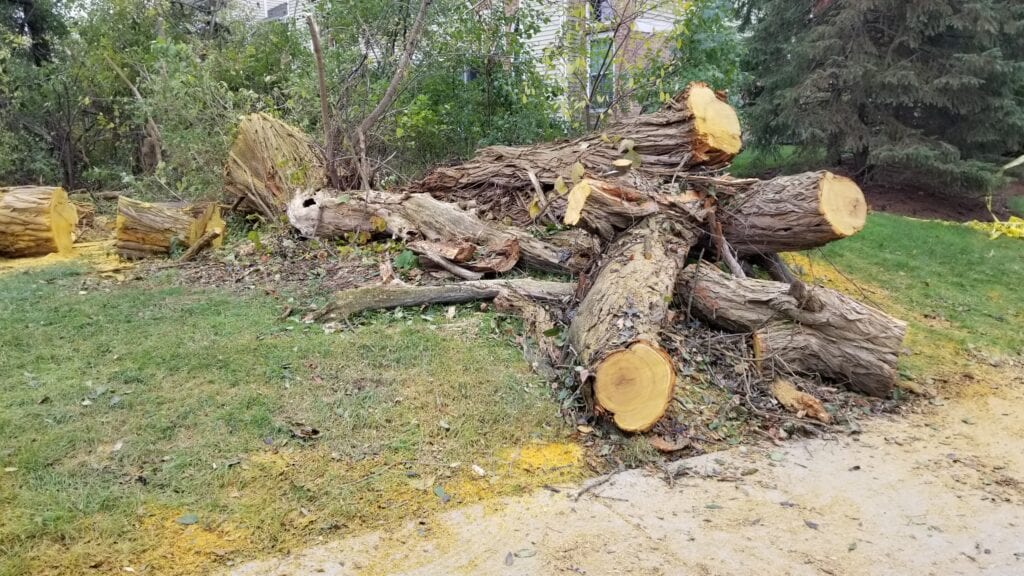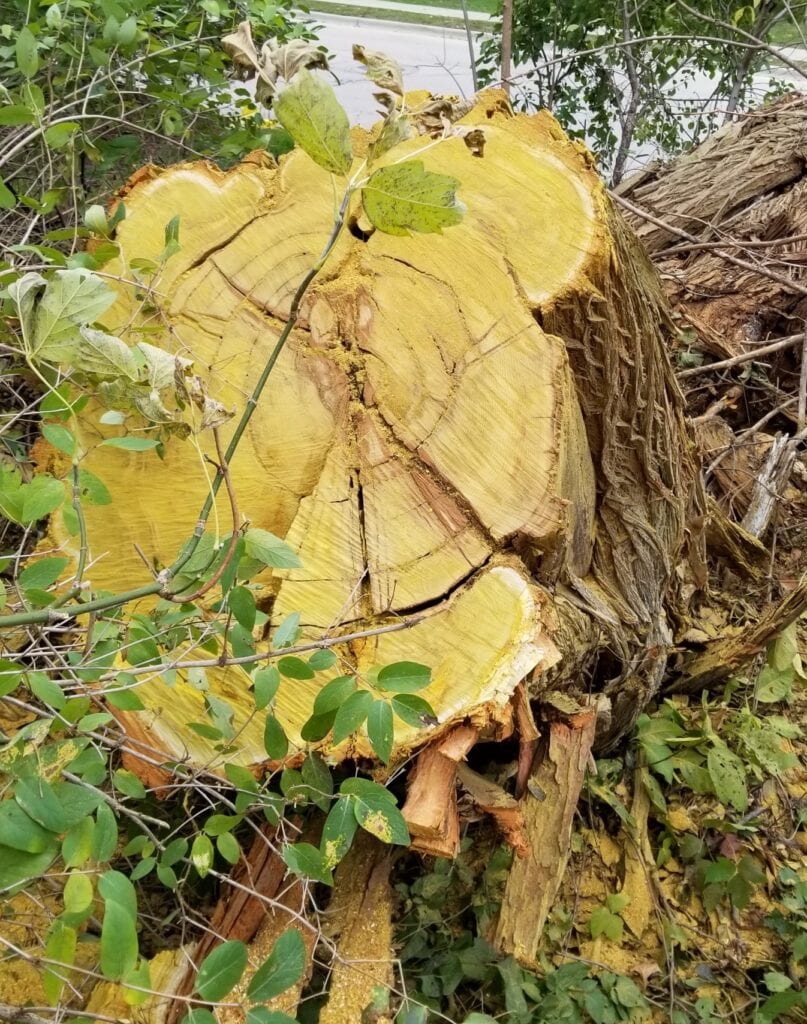Osage Orange tree (Maclura pom.) Failure – A century and a half year old tree goes down in West Chicago, Il
A tale behind the pictures below: (with some embellishment).
Picture this……Originally oak savannah, mixed with occasional tallgrass prairie…… early 1800’s perhaps…..pre-settlement, with sizeable native – American (in what is today West Chicago Il. ). Then…….along came settlers and farmers looking for arable, loamy farmland. And they found it. So in the process of clearing and maintaining their holdings (as time went on), by the mid 1800’s the idea of hedgerows came to be the norm.
And one of the more common and cheap forms of hedgerow materials was Osage Orange, a native to Texas and Oklahoma.

Osage orange tree failed in late October 2017. There had been storms the past month, but none severe- it was too heavy w/ a co-dominant (or pair of) stems. This tree had been in this spot since the 1800’s…..now an unrecognizable jumble of weedy invasives.
The farmer would then head out to his or her property borders and plant the sections of live Osage Orange into the rich earth every few yards, and VIOLA!…..the lifeless (dormant) wood sprang to life. And live they did. For close to 2 centuries! (See annual growth rings pictured). This species was also used (by the U.S. and WCC) as hardy a windbreak during and after the dustbowl in the central U.S., to combat erosion and wind.
So, if you ever come across a lonely row of Osage Orange along a roadside, or in a neighborhood, remember the lore of the farmer and his hedgerow. HINT: Look for those odd, and rather decorative lime green fruits in fall. They are produced by the female Osage Orange. Yes, they are sexed- male and female (or dioecious). If you ever have the urge to plant for the fruit- you’ll need both sexes to have fruit. In today’s market, most Osage Orange are of the male clones only, so no fruit. And sadly- up until recently, Osage Orange are hard to come by. But I recommend such trees- as they are hardy, seem to have few insect or disease issues, and live for centuries!
History of trees in the Chicago area…..See our native tree list for more info on reliable and sturdy trees for our changing climate in the Midwest. Ed Max is a certified arborist and naturalist, and would be happy to stop out for a consultation. Fall is best time for planting, as is spring.

Osage Orange – ancient hedgerow species of the 1800s, arborist Ed Max tells the tale. Trees of West Chicago, Winfield, Il are his specialty and passion!
* With a warming climate, and climate change- deciding on a tree for long term benefits is important – use native species such as oak, and hickory. Or Gingko, maple and Cypress. Ed Max is a certified Arborist and a member of the International Arborist Society, and is a landscape designer in the western suburbs of Chicago.
